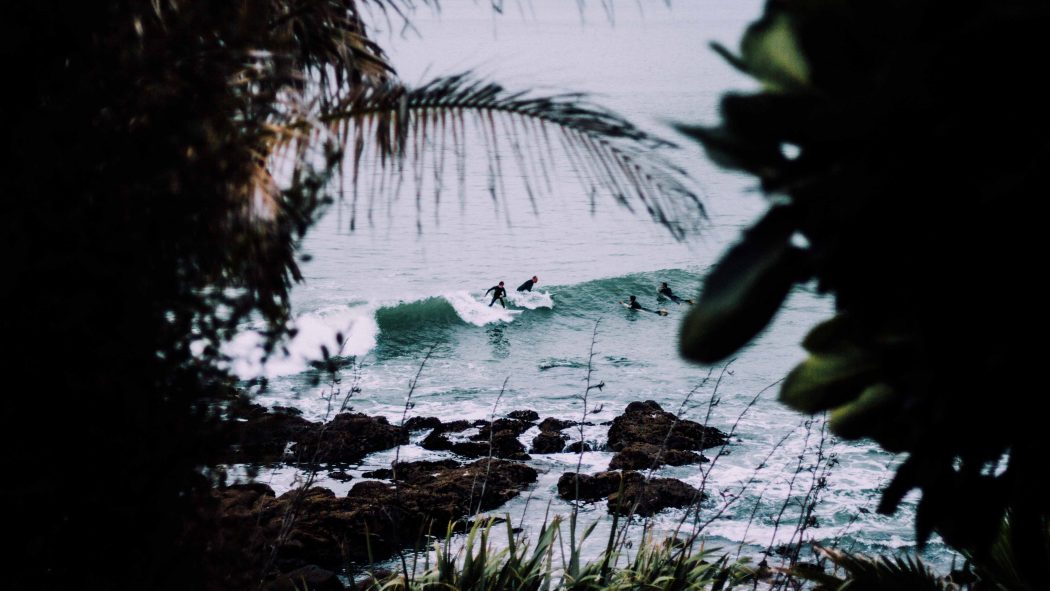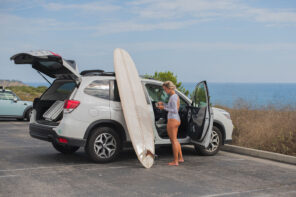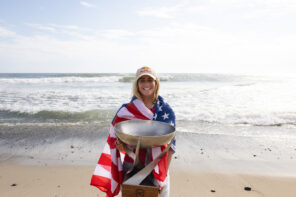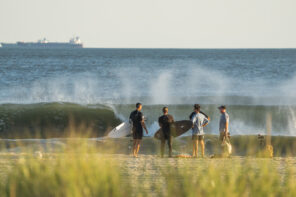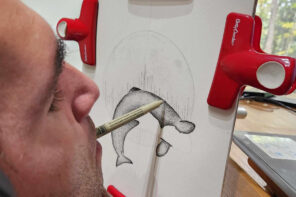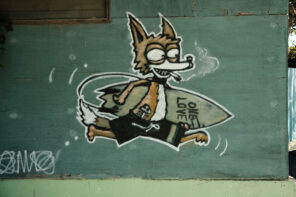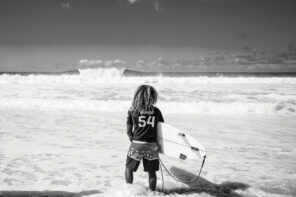“I think everyone has a feeling when they see something they’re passionate about covered in the mainstream media,” says Keith Plocek, a professor at University of Southern California’s Annenberg School for Communication and Journalism. “That your passion is just a drive-by story.”
Certainly he’s seen one of his passions, surfing, covered this way. “The perfect example is the cliche of TV weather reporters talking to surfers right before a hurricane. Some people are out and excited about the storm! That kind of thing,” says Plocek. But, through his other passion — reporting — he’s hoping to inspire a new crop of reporters to connect more deeply with surfing culture. To that end, he’s leading the the upcoming USC class, Shoot the Curl, which focuses specifically on Surf Journalism. One of the first of its kind, the course, which will begin in January 2017 is (pardon the pun) already making waves.
“Ever since word got out about the class, I’ve been contacted by surf journalists and academics from all over,” says Plocek. “It’s really exciting. We’re out there.”
He credits the success of Barbarian Days, William Finnegan’s Pulitzer winning, 2015 surf memoir, for some of the increased attention to the niche culture. “I think mainstream attitudes about surfing are changing,” he says. More people are looking at surfing as “an activity worthy of serious reflection.”
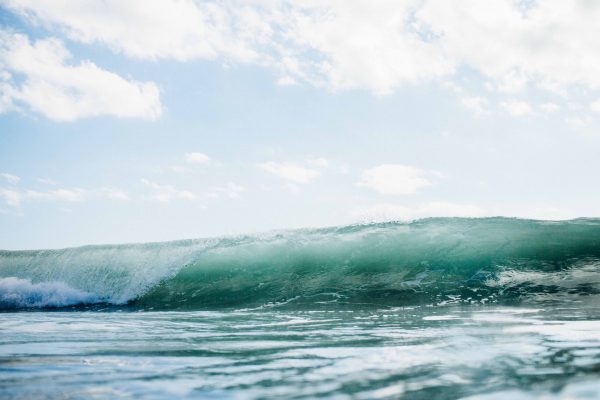
Photo: Tim Marshall
And beginning early next year, his students — including some who’ve never even attempted to get on a board — will immerse themselves in the culture. Covering topics like “surf journalism and gender” and “the relationship between surf media and advertisers,” Plocek wants to offer his students a comprehensive look at the surf community, a group which has historically been at once idealized and written off.
On one hand, there exists the vision most outsiders have of a surfer’s life. “It’s the myth of the dream surf trip,” Plocek explain. It’s the notion (which surf-focused advertising has only helped exacerbate) that surfers are “always surrounded by waves and paradise on the beach.” On the other, you have “[Jeff] Spicoli from Fast Times at Ridgemont High” (Sean Penn’s perpetually stoned character in the cult classic flick) “and his ah brah thing. That character was huge in shaping the public’s perception of surfers.”
Of course anyone who has adopted surfing as a passion or a lifestyle would tell you that paradise is more often missed than found. Surfers days are usually filled with a lot of waiting around for waves. Or driving to the next location to search for them — almost none of them talk like Spicoli.
By assigning his students a variety of reading material, including Finnegan’s memoir, and sending them out to the beach to capture photos, video and reporting, Plocek will push his students to find something new to say about a community that’s been so falsely and emphatically defined in media and culture.
“It’s not like all the kids in my class are going to go out and become surf journalists,” he admits. But they will be expected to understand the history, evolution and realities of surf culture — concepts Plocek himself has focused time unpacking.
The Making of a Surf Journalist
After leaving Cambridge University with a Master’s in Latin American Studies (“How I wound up with a degree in Latin American Studies from an English university is a whole ‘nother story,” he jokes) Plocek worked at the Houston Press as a writer and editor. A few stints at the alt-weeklies and a digital company led him to LA Weekly, where he climbed to the director of digital content for 17 publications. “I was traveling all over the country, managing quite a few people, and I learned a lot along the way,” he says. “But, eventually, I felt really removed from the actual editorial process.”
In 2014 he left his job, with no plan in mind other than to drive and surf. “I took off with a 5’10” Bing fish in a beat-up Honda Civic and drove all the way from Los Angeles to Panama, surfing along the way,” he recalls. “It was a helluva trip. By the time I got back I had all kinds of ideas about surfing’s larger place in the world, especially when it comes to how traveling surfers affect coastal communities in other countries.”
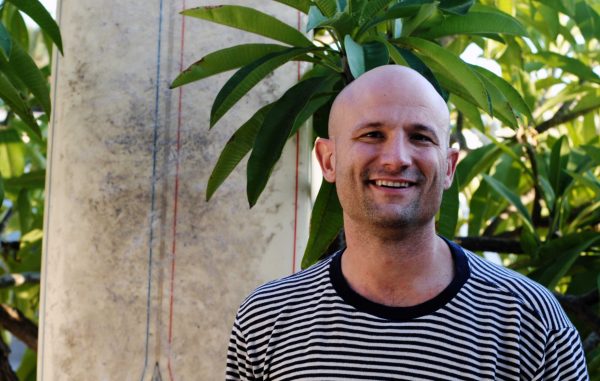
Keith, somewhere tropical.
While experiencing surf culture through a reporter’s lense, the professor discovered a broader mission. “I started writing about surfing soon thereafter.” He’s penned pieces analyzing Endless Summer (“I love that movie … I’ve watched it at least a dozen times,” he says) and was the first to capture aerial footage Kelly Slater’s artificial wave pool in Central California — something he accomplished by attaching a GoPro camera to a kite.
Eventually, his coverage of surf communities led to the idea of the course, which promises to “combine old-school reporting with cutting-edge technology.”
“I’ve been teaching at USC Annenberg for a couple years now (and) I’ve had some great mentors there,” Plocek says. “Professors Vince Gonzales and Serena Cha, they really encouraged me to go for it. And the J-school director, Willow Bay, saw the possibilities of the class immediately.”
Perhaps that’s because the class is about much more than just surfing. “It’s about community reporting,” says Plocek. “We’re sending students to the beach to report on local surf communities.”
So what’s next? Surf journalism in every media department across the country? “Sure, that’d be cool,” Plocek says. But his real mission is to put good reporters out into the world. “My hope is that when one of my students goes on to become a journalist, and is assigned to cover something he doesn’t know much about, this class will have influenced him to go deeper.”
Still, he can’t help but also have faith the knowledge students will gain in his course can also help the particular community he’s so personally connected to. “Maybe when these students go out and do story about surfing later in their careers,” Plocek says, “They are going to do it better.”
Keep up with Keith and his class via his Twitter.

